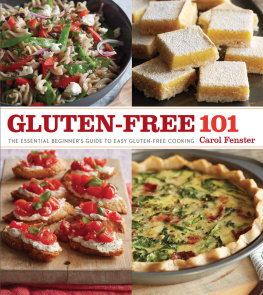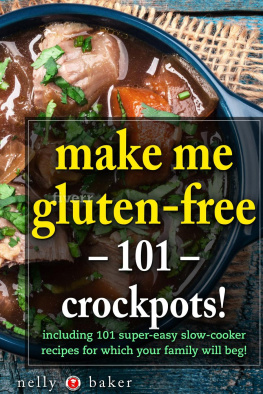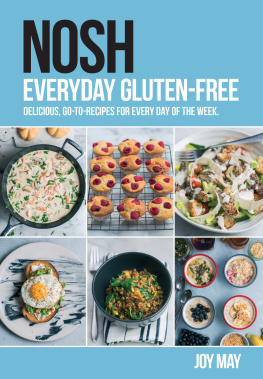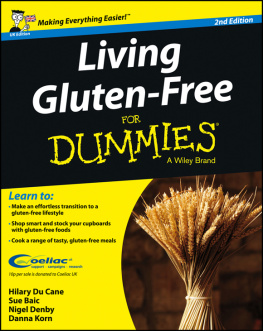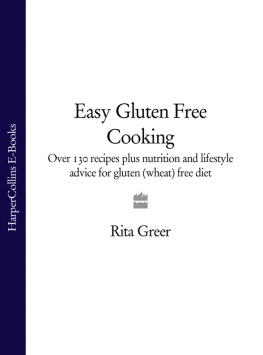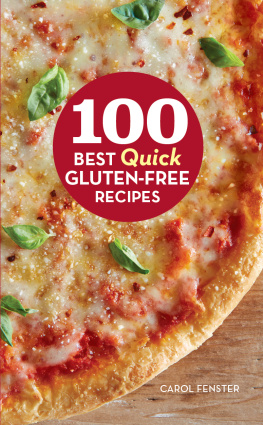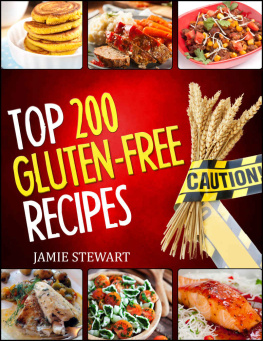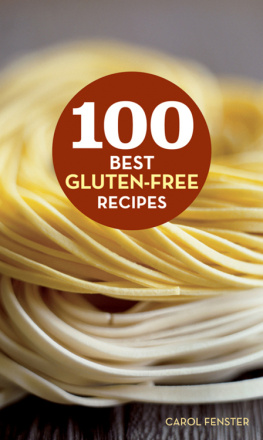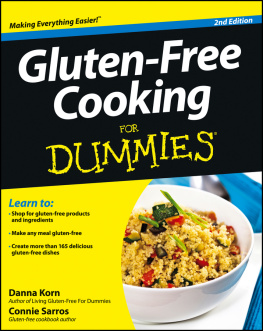For information about permission to reproduce selections from this book, write to Permissions, Houghton Mifflin Harcourt Publishing Company, 215 Park Avenue South, New York, New York, 10003.
Fenster, Carol Lee.
Gluten-free 101 / Carol Fenster; photography by Jason Wyche.
Includes index.
1. Gluten-free dietRecipes. 2. Gluten-free diet. I. Title. II. Title: Gluten-free one o one.
Acknowledgments
I have many people to thank for their help with this bookboth the original version and this new edition. A special thanks to my original testers: Anne Barfield, Jamie and Lisa Bridges, Julie Cary, Caroline Herdle, Debbie Lee, Chrissy Rowland, Judy Sarver, Chris Silker, Leen Spear, Anne Washburn, Betty Wass, Cecile Weed, and Sue Weilgopolanand to their families and friends for lending their critical palates to the tasting process for nearly 10 years. I truly appreciate your contributions!
And in the past 10 years, these recipes have been reviewed, revised, and reworked thanks to input from students in my cooking classes, attendees at the trade shows where I have been an exhibitor, and the many friends and family who have gathered around the dining table in my home. I confess: Although we enjoyed each others company over those meals, I was also gathering information about the food for this cookbook. Did it taste good? Did it look attractive on your plate? How could it be better? Notice how I deftly worked those queries into the dinner-table conversation?
To all of you, thanks so much for your help. You made this a better cookbook.
I am also deeply indebted to the following professionals who gave me their wonderfully informative and constructive feedback on this book: Shannon T. Bishop, RD; Mary Bonner; Shelley Case, RD; Helke Farin, MD; John H. Hicks, MD; Cynthia Kupper, RD; Betsy Prohaska Hicks; Janet Rinehart; Peggy Wagener; and Ann Whelan.
Special thanks go to my marvelous agent, Lisa Ekus, and her teamSally Ekus, Sean Kimball, Corinne Fay, and Jaimee Constantine. You have been so wonderfully supportive of my work, and I cannot imagine traveling on this journey without you.
I am also extremely grateful for my superb editor, Linda Ingroia, at Houghton Mifflin Harcourt and her assistant, Molly Aronica. They make my books so much better! Thanks also to Jackie Beach and Jamie Selzer in production; Michaela Sullivan for a vibrant, enticing cover; and Joline Rivera for an engaging book design. Photographer Jason Wyche, food stylist Chelsea Zimmer, and prop stylist Kira Corbin delivered gorgeous photos of my recipes and were a joy to work with.
And finally, thanks to my wonderful familyespecially my husband, Larry, for his patience, support, and encouragement. To those of you who dont know Larry, no recipe gets into my cookbooks without his approval, because he tastes everything. If he doesnt like it (and, by the way, he is not gluten-free), it doesnt go in the book. Thank you, Larry!
Preface: A Few Words from Carol
Toto, I have a feeling were not in Kansas anymore, says Dorothy in The Wizard of Oz. Thats how I feel about our new gluten-free world; its not the same world I entered more than two decades ago. And its certainly not the same as when I wrote the first edition of Gluten-Free 101 in 2003. We have new laws, new ingredients, and new techniques that make our gluten-free food so much safer and better. Given all these changes, I had to totally rewrite this book to bring it up to date for you.
But why would I write a gluten-free cookbook in the first place? It may surprise you to learn that I am an accidental author. Writing cookbooksespecially gluten-free cookbookswas not part of my life plan. But life is full of ironies.
You see, I am the daughter of a Nebraska farmera farmer who grew wheat. Wheat was a good thing at our house. It put food on the table and paid for my college tuition. After college, I married into a wheat-farming family. In fact, that is all that they raise on their farm in western Nebraska. Furthermore, my father-in-law is an internationally known professor emeritus of agronomy at the University of Nebraska. What is his main area of expertise? You guessed itwheat!
After I first discovered my intolerance to the gluten protein in wheat, I thought I was the only person on the planet who had to avoid this seemingly healthy food. At least, I certainly didnt know anyone else with this life-altering situation, and back in 1988, there wasnt much information on the topic. The Internetas we know it todaydid not exist. I was in a state of denial for some time, bewildered by this unexpected turn of events that disrupted my otherwise wonderful life. Because the condition was virtually unknown, there was little concern from others, and I was often told it was all in my head. There were virtually no gluten-free foods in stores back then, so I had to revise my entire repertoire of recipes to exclude wheat. Over time, I met more and more people who also avoided wheat and realized that my revised recipes might help others. Following the old adage about turning lemons into lemonade, the idea for a cookbook was born.
Gluten-Free: New Diet for the 21 st Century
Today, 25 years later, I know that I am one of about 21 million Americans who live with what is now called non-celiac gluten sensitivity. I do not have the genes that are associated with celiac diseasean autoimmune condition that affects another 1 percent or about 3 million Americansbut I am still sickened by the gluten in wheat and related grains, so I must avoid it. That is much easier today than it was back then because the gluten-free industry has mushroomed into a multi-billion dollar industry, with large corporations introducing gluten-free products alongside the mom-and-pop entrepreneurs who founded the industry decades ago.
Growth of the industry was fueled by the passage of the Food Allergen Labeling and Consumer Protection Act (FALCPA) of 2004, which requires manufacturers to identify the eight major food allergens, including wheat, on any food manufactured after January 1, 2006. In August 2013, the FDA defined gluten-free as a product with less than 20 parts per million (ppm) of gluten. There is no requirement that gluten-free foods be labeled gluten-free, but when a manufacturer chooses to put gluten-free on food packaging, the item must comply with the new FDA definition.
Adopting a gluten-free lifestyle makes it imperative that we prepare much of our own food at home, not only for safety reasons but also because it is much less expensive than dining out. Beginners need simple recipeslike the dishes they grew up withso they can eat well and stay healthy.
How Does This Version Differ from the Original Version?
This new edition builds on all the new ingredients and techniques introduced since 2003 to be bigger and better in the following ways.

